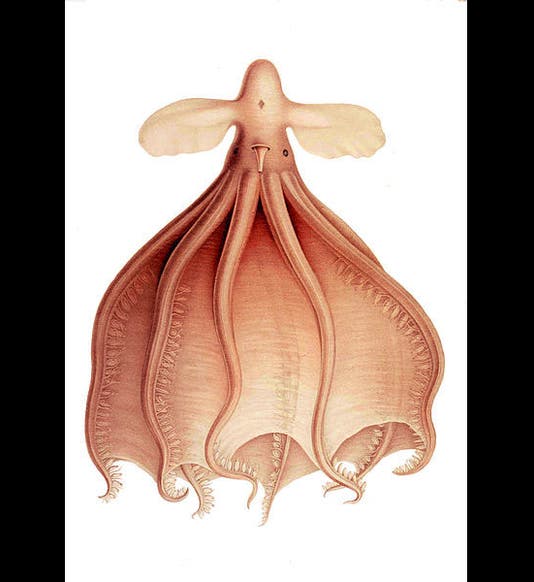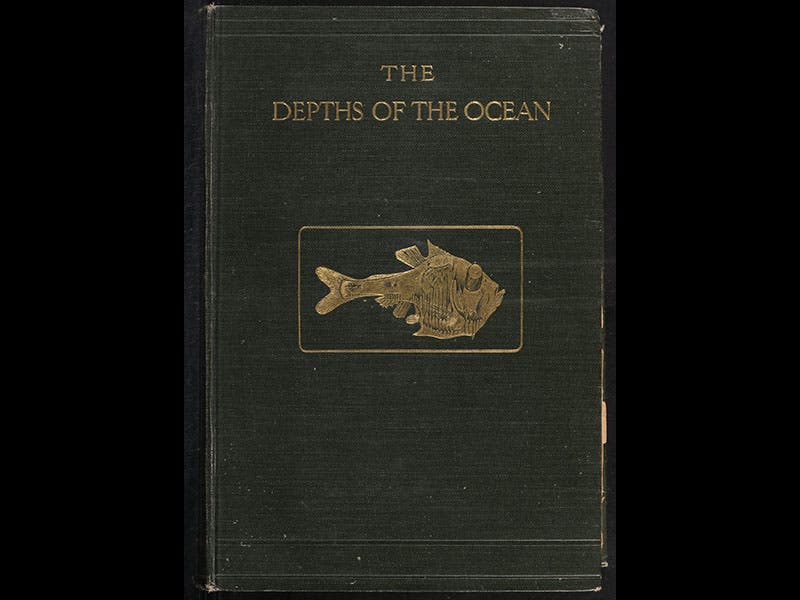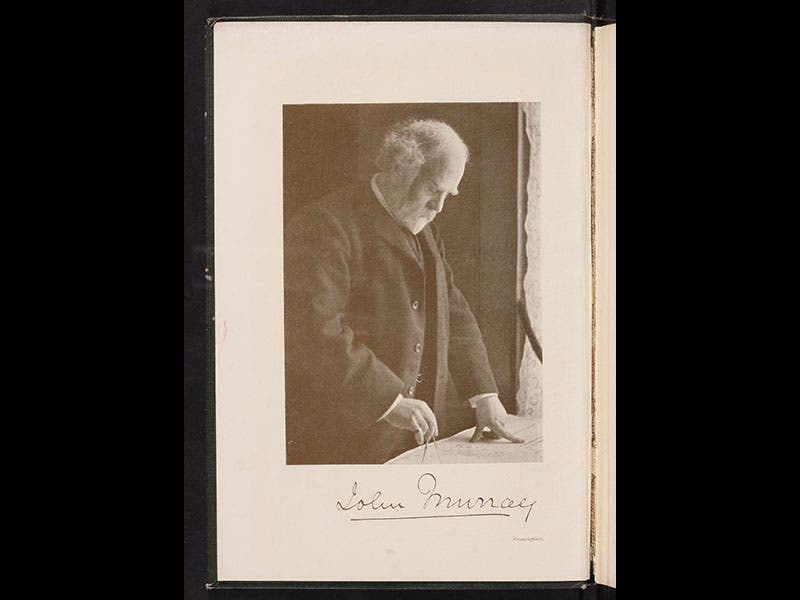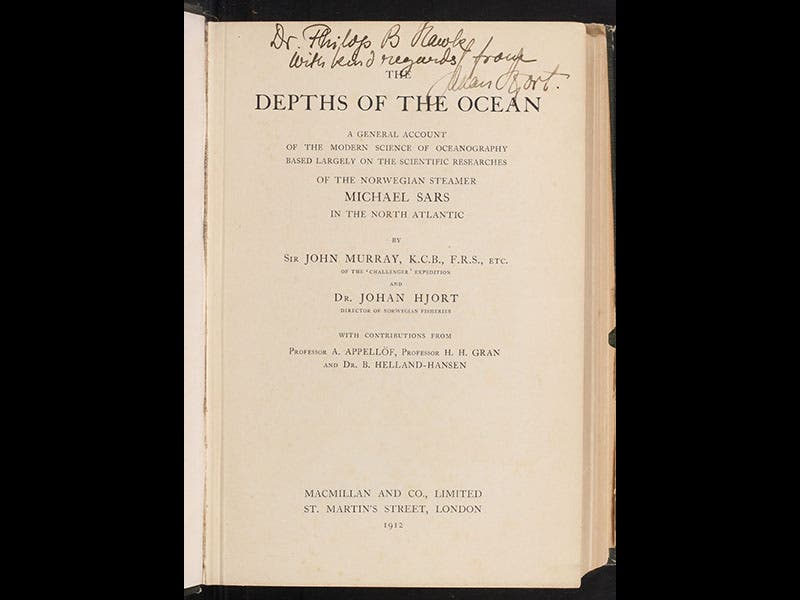Scientist of the Day - John Murray
John Murray, a marine biologist, was born Mar. 3, 1841. In 1872, Murray embarked on the Challenger voyage, the world's first oceanographic exploring expedition, where he was assistant to Wyville Thomson. Together the two discovered the mid-Atlantic ridge that would later (in the 1960s) play such an important role in the discovery of sea-floor spreading and plate tectonics. After the expedition was over, Thomson had a nervous breakdown and died while trying to organize the expedition narrative, so Murray stepped in and edited all 50 volumes, not finishing until 1896. We have the complete set in our History of Science Collection.
In 1910, Murray convinced the Norwegian government to lend him one of their research vessels, the Michael Sars (the deal was that Norway would furnish the ship and Murray would pay all expenses), and he cruised through the North Atlantic with Johan Hjort, studying the biology of the deep sea floor. Murray and Hjort revealed, in their oceanographic classic, The Depths of the Ocean (1912), that the ocean floor is teeming with living organisms, and is not “azoic” (devoid of life), as many marine biologists continued to believe. The book contains color plates of some of the more bizarre denizens of the deep (see fourth image above), and another lives on, embossed in gold, on the book’s front cover (second image above). Murray himself lives on in the names of several deep-sea creatures, the most intriguing being a blind octopus, known as Cirrothauma murrayi (first image above).
The other images above show a photograph of Murray taken in 1911, as it appears on the book’s frontispiece; one of the dredges that they used to haul up specimens from the ocean floor; and the title page of Depths of the Ocean.
Dr. William B. Ashworth, Jr., Consultant for the History of Science, Linda Hall Library and Associate Professor, Department of History, University of Missouri-Kansas City












